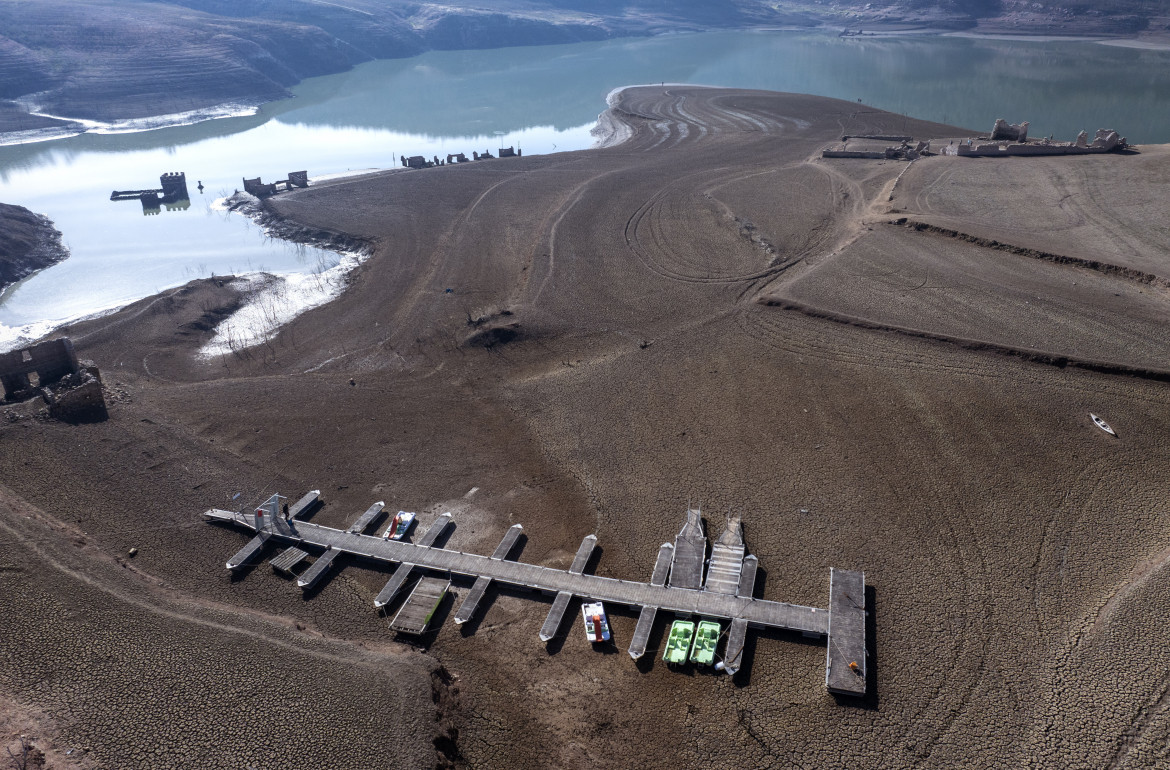“As of next week, there will be no showers at girls’ training.” Thousands of families in Barcelona received similar messages on their phones from sports centers. Catalonia officially entered a state of drought emergency yesterday. As has been happening for years in Andalusia, but a thousand kilometers south.
the situation It's been worrying since last summer. It's been 40 months since it rained this much in Catalonia: more than three years. Between 1990 and 2020, it rained at a rate of 620 liters per square meter per year in Barcelona. But since April 2021, the annual average, calculated over the previous 365 days, has fallen to 410 liters per square meter per year.
Since March 2023, it has fallen to less than 330 liters (the negative peak was reached in April 2023, 216 liters per square meter over the previous year). Yesterday's rain gauge showed 327.2 liters per square metre. In other words: In the past 43 months, from July 2020 to today, 37 months have seen below-average rainfall.
The Catalan government officially declared a state of emergency under a decree approved on Thursday because, as expected in the plan adopted in recent months, the region's water reserve fell below 16% on Wednesday. The decree limits the water supply provided by the system in 202 of the most populous municipalities, including Barcelona and Girona, to 200 liters per inhabitant per day. The measures include about six million Catalans. Similar measures taken in Andalusia affect another four million people.
In municipalities When you go beyond 200 liters per person use, you will actually start to notice drops in water pressure. Barcelona citizens use on average about 165 liters per person per day: at the moment they will not notice much of a difference. But Catalan President Pere Aragonés recommends that every household strive not to exceed 90 litres.

The problem, as always, is that it affects you differently depending on your economic level. Watering 100 square meters of garden can require 400 litres, taking a shower up to 300 litres, and filling a swimming pool in a villa requires 20 thousand litres. According to 2016 data, the average consumption per guest between jacuzzi and swimming pools in a 5-star hotel is 545 liters per day, in a 4-star hotel 373 liters, and in a three-star hotel 232 liters.
In fact, the decree's measures stipulate, in addition to the 200-litre limit, not to fill swimming pools, not even those in sports facilities: the world of tourism is on alert and camps and resorts are already planning to use sea water. Furthermore, you cannot wash any type of vehicle (up to 400 liters of water is used to do this), unless you go to a specialized water recycling centre.
For irrigation Urban green spaces will have to use exclusively non-potable water (and the Barcelona municipality is looking at measures to reduce losses among its 35,000 urban trees by using groundwater or recycled water). Similar rhetoric to cleaning the streets: it will not stop. Since last summer, bathing and foot-washing places on beaches in the city as well as along the entire Catalan coast have been closed. Even all monumental fountains, such as the famous “Magic Fountain” in Montjuïc, Barcelona, have been closed since last summer.
The most important restrictions are those imposed on agriculture, which uses the most water resources: in the emergency phase, agricultural irrigation must be reduced by 80%, water use in agriculture by 50%, and % for industrial use.

But as climate activists never tire of reminding us of their actions that astonish right-thinking people soaking in their Jacuzzis, the climate emergency is not going away, and this year's drought will not be the last. Everyone looks at the sky, hoping that spring will bring rain.
But if you pray If it is not enough, the future challenge is open. According to Aragones, the proportion of renewable water – coming from the purifiers – is already more than 55% (which is why, as he explained, we were able to delay the entry into force of these measures), but the goal is to build new structures in the future. Years. In Catalonia there is also the largest desalination plant in Europe: in Prat de Llobregat, where the airport is located, which produces 60 cubic hectares of water annually to cover almost a quarter of the urban area's needs.
This summer there is talk of the possibility of importing water by ship from Marseille, Palma or Tarragona. But this is an extreme solution (expensive and ineffective) that the Catalan government hopes it will not have to adopt.
Meanwhile, Catalan families are preparing for months of homeschooling about water use, turning off taps, taking faster showers and fuller washing machines, and hoping that those boots and raincoats will be stored in the back of the wardrobe in the spring for months. So they can be pulled back.

“Reader. Travel maven. Student. Passionate tv junkie. Internet ninja. Twitter advocate. Web nerd. Bacon buff.”




